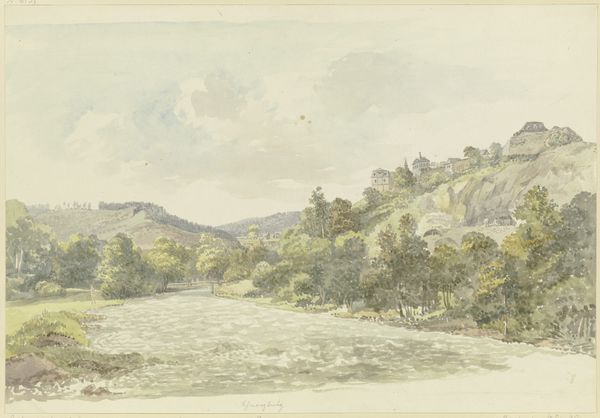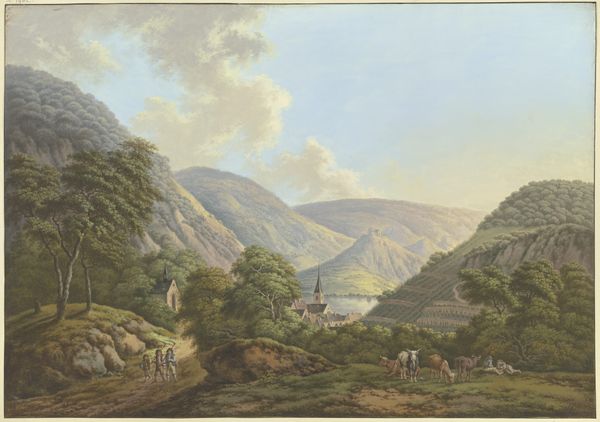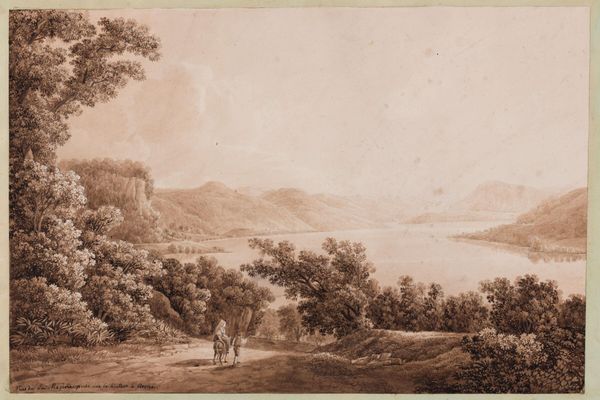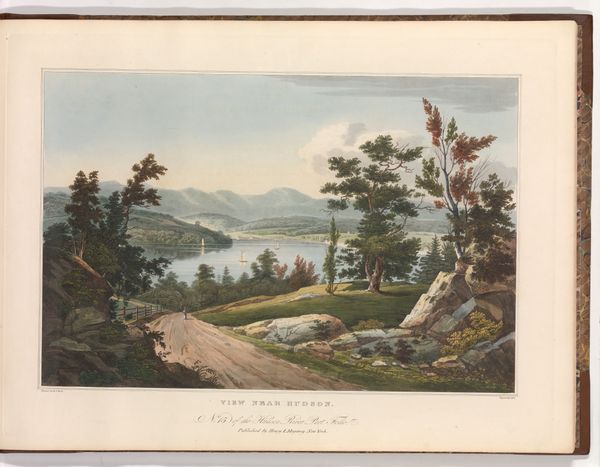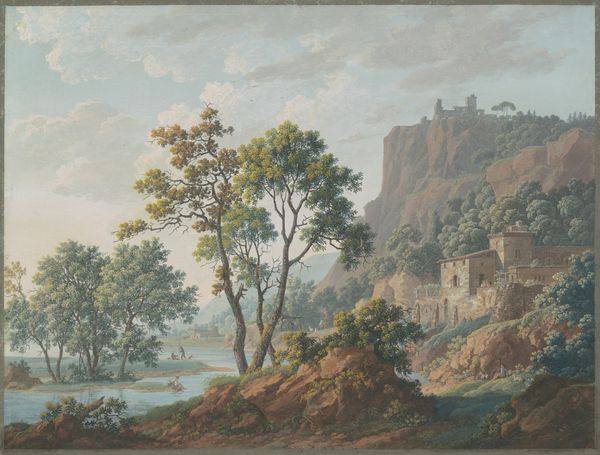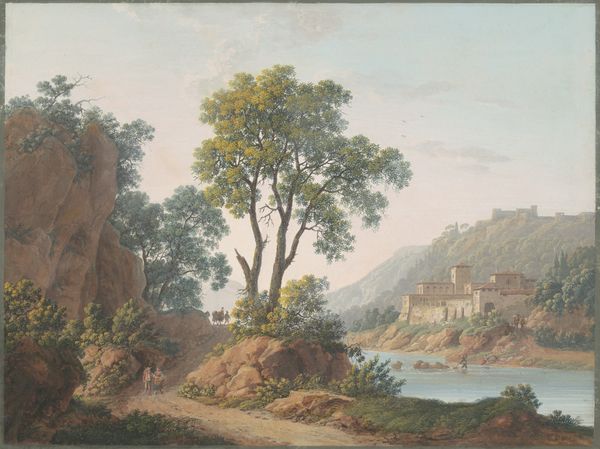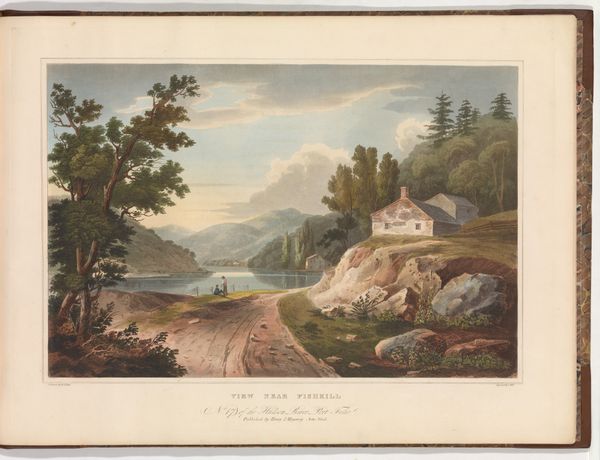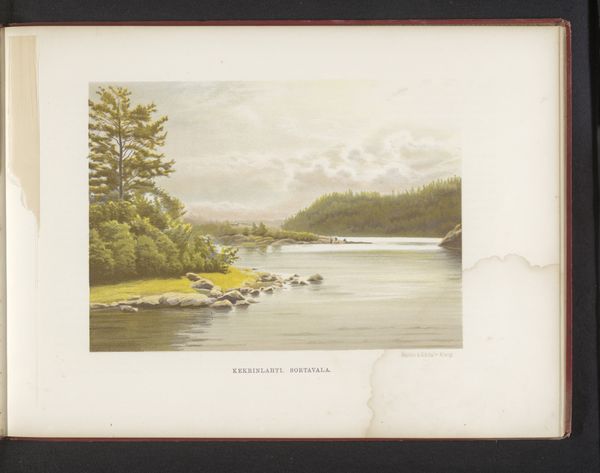
View of the Round Howe near Richmond, Yorkshire 1788
0:00
0:00
drawing, print, plein-air, watercolor
#
drawing
#
neoclacissism
#
water colours
# print
#
plein-air
#
landscape
#
river
#
watercolor
#
coloured pencil
#
underpainting
#
watercolor
Dimensions: 19-3/4 x 26-1/4 in. (50.2 x 66.7 cm.) oval
Copyright: Public Domain
Curator: This watercolor and colored pencil drawing by George Cuit the Elder, completed in 1788, presents us with "View of the Round Howe near Richmond, Yorkshire." It's a splendid example of plein-air drawing. Editor: My first impression is one of serene composure. The composition, with its careful balance of land, water, and sky, feels deliberately ordered and calm, like a constructed ideal of nature rather than a raw representation. Curator: Indeed. While seemingly idyllic, this work reflects the cultural and political landscape of its time. The landed gentry’s appreciation for idealized landscapes underscored their position in society, creating a visual reinforcement of hierarchy. Notice the tiny temple placed upon the peak; the leisure of such architecture comes to mind. Editor: I notice how Cuit uses watercolor to create a remarkable sense of depth, a sophisticated layering of washes building up the density of the foliage and the gentle undulations of the terrain. Also, this round format—do you believe it is used to amplify or restrict depth? Curator: I see your point. This format, somewhat like looking through a telescope, amplifies both depth and the sense of observing something constructed—the picturesque becoming a carefully curated viewing experience. Also, there’s the matter of the underpainting: the barest hint of underdrawing that holds a powerful key to Cuit’s intentionality with regards to this piece’s greater statement about how landscapes are viewed. Editor: And yet, even within that structure, the play of light is remarkable. Observe how light models the undulation of form. Notice also, in the lower, near part of the painting, a worn footpath—or roadway, maybe—indicating movement and a possible location from which to contemplate and consider. The river winds, beckoning the eye deeper. Curator: And there’s a powerful tension in that: an appreciation of "untamed" nature is coupled with an unmistakable reminder of civilization’s presence. Land enclosure movements impacted rural communities even then, forcing many from their ancestral homelands to work at newly erected textile and industrial mills; such idyllic art becomes a commentary about those who continue to have access to pastoral refuge. Editor: Yes. I began by noting how well balanced the landscape seems. However, I see that imbalance and friction and all of the concerns that you mentioned just beneath its facade, in these barely-there formal and conceptual techniques. Curator: Precisely; by acknowledging the artwork's relation to history, we have begun to discover the artist’s unique understanding of humanity's dynamic relationship with nature, as understood through the artist’s contemporary gaze.
Comments
No comments
Be the first to comment and join the conversation on the ultimate creative platform.


